 FAudio Project Y Review: Mesmerized
FAudio Project Y Review: Mesmerized
Have you heard about Faudio before? If you’re from Asia, then I would guess that you most likely did. If you’re from western countries, perhaps not so much. Faudio is a UIEM/CIEM manufacturer based in Hong Kong that made an explosive debut through its prior flagship 1DD IEM called Major. Setting their strategy to first focus on Asia markets (especially Japan), they’ve later released Minor, Passion, Chorus, and Scale that gave them even more recognition.
Though for the past several years, a mysterious universal IEM continuously showed up on Faudio exhibition booths. Without telling much information about this IEM, the staffs at the booth allowed the visitors to take a listen and collect their feedback. Later to be known, this was Faudio’s limited flagship IEM called the Project Y. It was evident that they’ve spent many hours and tuning process to perfect the sound as they tried to meet the community’s desired sound signature and preferences. Project Y is limited to 399pcs worldwide and Faudio once again nailed it as most of the batches were quickly claimed soon after being available. Now, let’s see how Project Y is built, tuned, and competing against other powerful summit-fi IEMs.
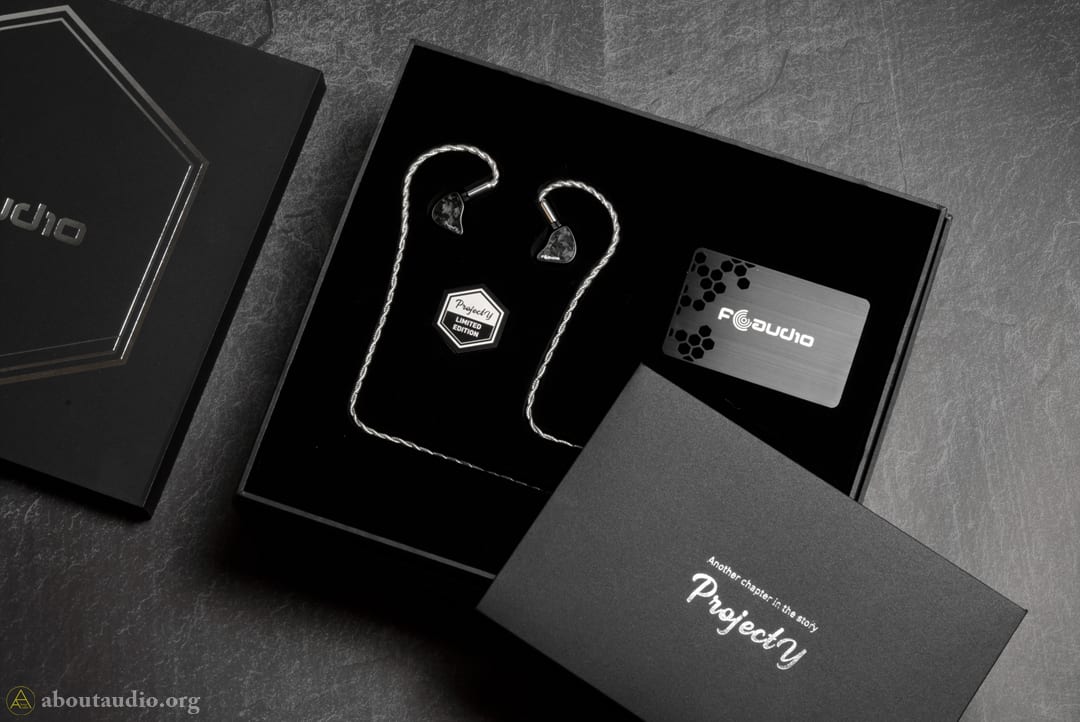
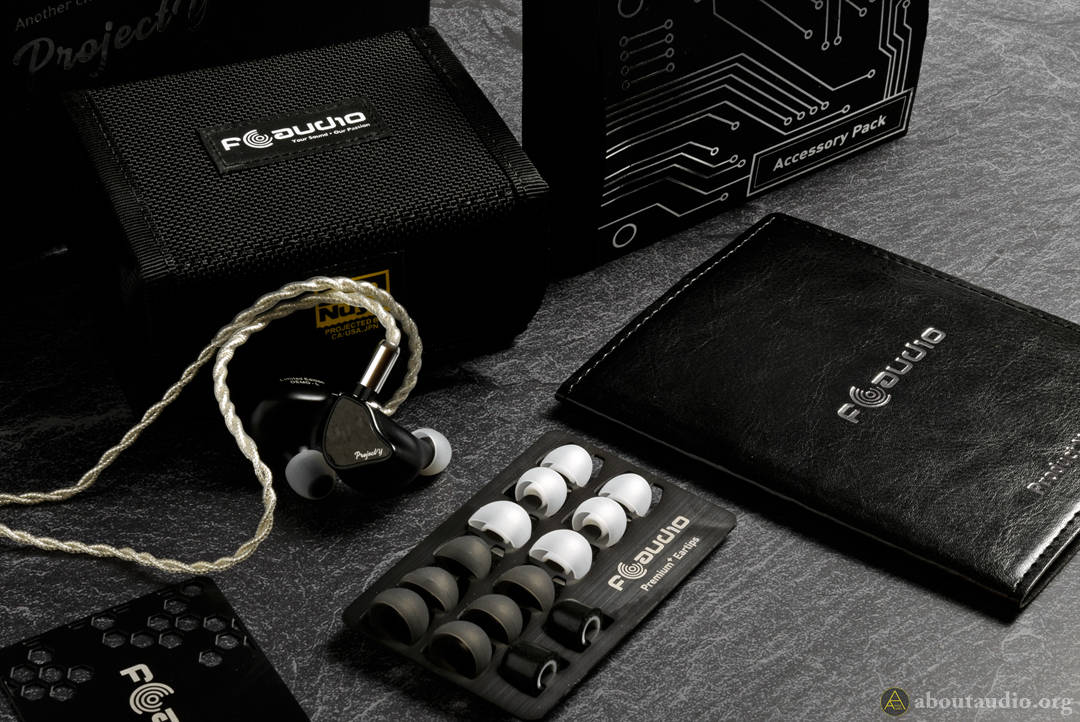 Packaging
Packaging
Project Y comes in with a large box with a baggage handler on top of it – and that is already a giveaway that this product is everything about premium. Removing the outer box reveals the inner packaging box that includes all the belongings. As we open the lid, the earpieces and cable are nicely presented along with a metal Project Y emblem, a metal brushed emblem card, and a manual envelope.
Other than the earphone, the package includes 4 pairs of FA Vocal silicone tips (an extra M size pre-installed), 3 pairs of FA Instrumental silicone tips, 3 pairs of FA custom-made ear-gel tips, 2 pairs of foam tips, 1 pair of Comply foam tips, 3 pairs of SpinFit eartips, a VanNuys carrying case, a cable tie, a cleaning tool, and a small leather notebook that includes paperwork. The included VanNuys case is the same one that also comes along with Oriolus Traillii that well protects the IEMs. A dividing is attached to the inside that also prevents the earpieces from hitting each other.
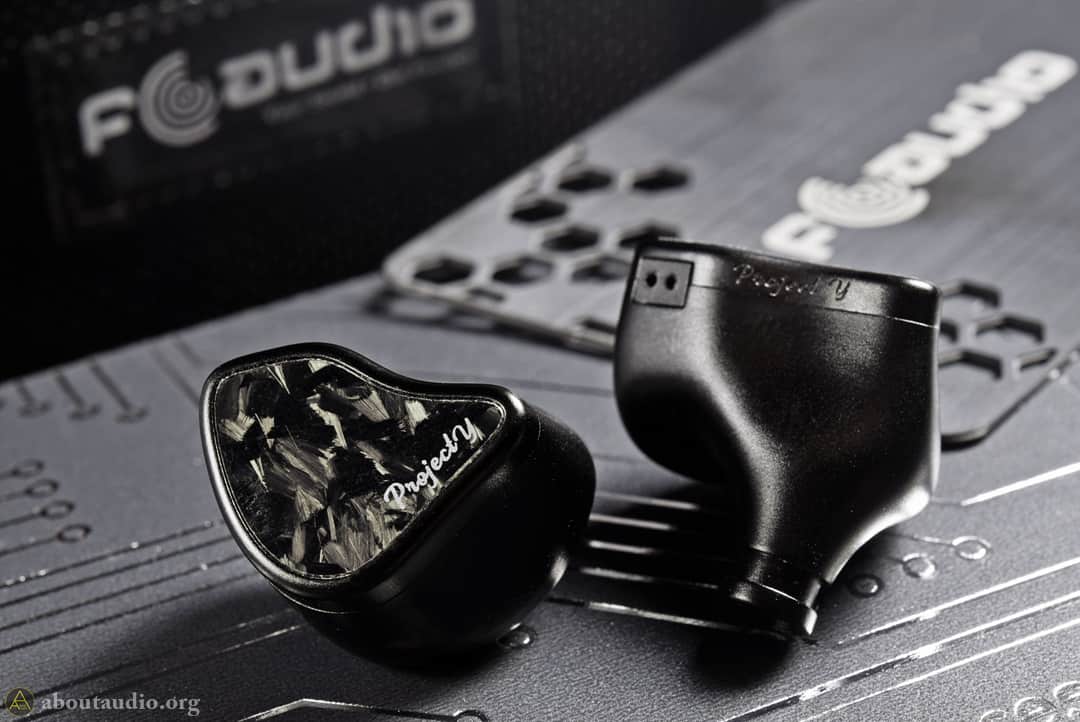 Earpieces – Tribrid combo
Earpieces – Tribrid combo
Perhaps this is the coolest looking full-black IEM to this date. The chassis is made of CNC aluminum alloy with a fine matte finish. Faudio used high-quality carbon for the faceplates which Faudio claims to be the same carbon materials used in the making of supercars.
Specification-wise, Project Y uses a 4BA+1DD+2EST tribrid setup with a proprietary 9.2mm fiber-coated beryllium diaphragm. As for the 4BA drivers, two of them serves as a full-range driver while the other two are meant for the mid-highs. Quite interesting that a portion of BA drivers are set to be full-ranged even while there are dedicated low and high drivers. Lastly, and obviously, the two electrostatic (EST) drivers are super tweeters that take care of the ultra-highs. Faudio claims that combining three different types of drivers brought countless challenges and attempts until achieving its finalized sound.
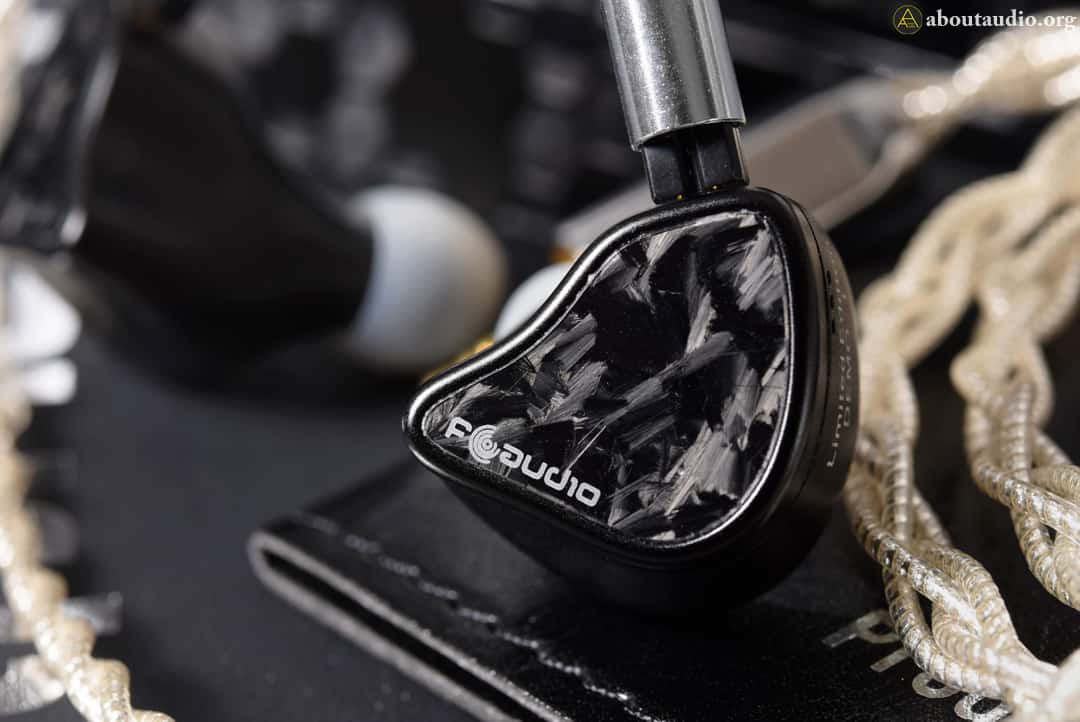 Earpieces – T.C.T and TBAC
Earpieces – T.C.T and TBAC
Faudio also incorporated two proprietary tuning techniques into Project Y. First is the True Crossover Technology (T.C.T). Faudio introduces that T.C.T allows them to control the frequency range of multiple BA drivers with micro precision. Not only this makes the sound highly consistent and coherent but it also maximizes each driver’s performance.
The second technique applied to Project Y is TBAC. I would consider this to be the most interesting feature within Project Y as this technique uses three different types of chambers for tuning the sound. The first chamber stabilizes the air pressure as well as boosting the size, speed, and power of the bass response. The second chamber then gently calms the dynamics of the diaphragm while retaining the damping, causing a linear and even bass flow. This is also the key component that offers a wide, open-field even for the low-range which is unusual (in a good way). Lastly, the third chamber reinforces the clarity and width of the bass while not increasing the ear canal pressure. Since different chambers are built to add or reduce certain elements of the sound, it’s no surprise why Project Y is not available in large quantities and took so long to release.
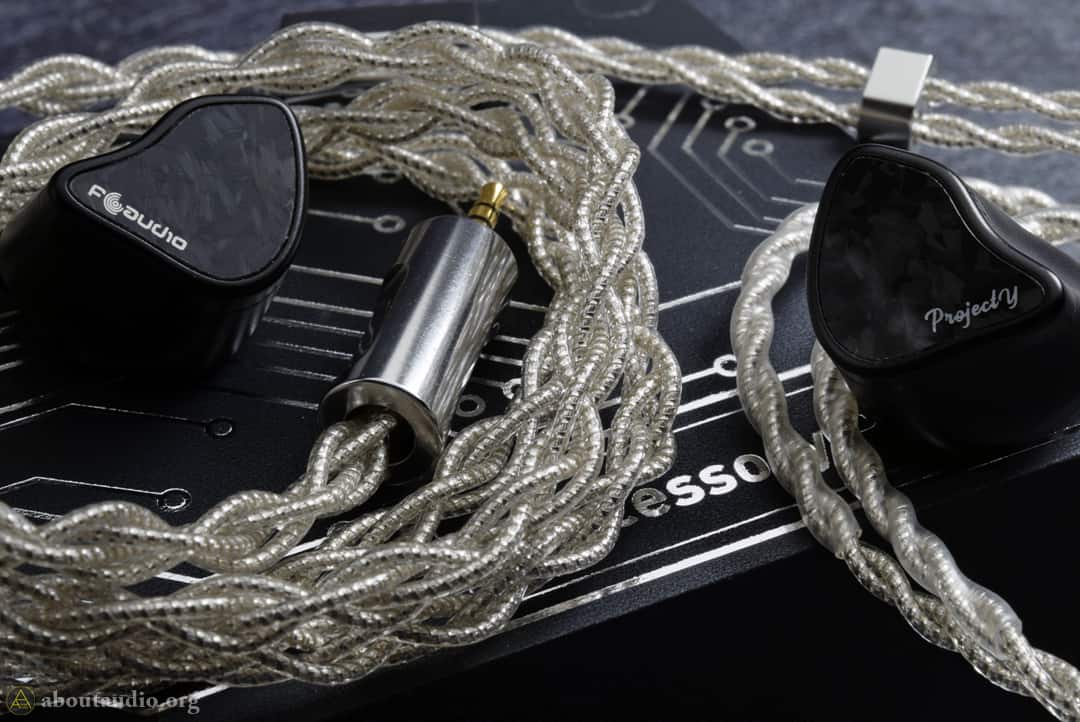 Cable
Cable
Proprietary accessories, proprietary drivers, and so the cable is also made proprietarily. Project Y comes with a 4-braided stock cable made with premium wire and metal components. The wire is a composite of German sterling silver and Japanese crystal silver wires, which are then shielded with crystal UPOCC silver-plated wires and pure-silver wires. While the specifics weren’t described, Faudio informs that the solderings were also used with premium materials that ensure better sound quality.
The stock cable is terminated into 2Pin-2.5mm with earguides formed at the upper side of the cable. While the included accessories were fantastic, so does the stock cable, it makes me wonder why they haven’t included any converting plugs that allow 3.5mm or 4.4mm connection. Although I would assume that most users who are willing to buy such premium products would already have their own converters, though it is definitely a bit of a drawback.
 Sound impressions – Lows
Sound impressions – Lows
Looking at the big picture first, Project Y forms a mild w-shaped sound signature with an emphasis on the upper-ends. The body of the sound is mildly bulked up from flat, leading to a refreshing and highly balanced presentation. Lows are gentle and virtuous but tightly controlled that offers good tension to its dynamics. The bass quantity is more than flat but lesser than “slightly v-shaped IEMs” which is a perfect amount for those who seek a flat tuning but with just a touch of extra bass.
I’d like to use the word “light” though not in the sense of how we usually apprehend. The bass feels light in terms of vividness but not in weight or details. Of course, Project Y does not a basshead level of bass but would be plentiful to satisfy up to a degree of other slight v-shaped IEMs. As long as your expectation is set to be a well-balanced tuning, Project Y is thoroughly capable of bringing out deep scents and depth from the ultra-lows, hence the lows really don’t lack in extension or performance.
With a darkish tone, lows are deeply established on the lower side of the headroom that offers stability to the sound. The strikes are hard enough but still tilts towards the gentler side. The flow of the low-ends is very consistent which aligns with Project Y’s gentle presentation. Overall, the mild bass tuning serves to be more of a supporter for the upper ends – by keeping its limits and letting the upper-ends shine.
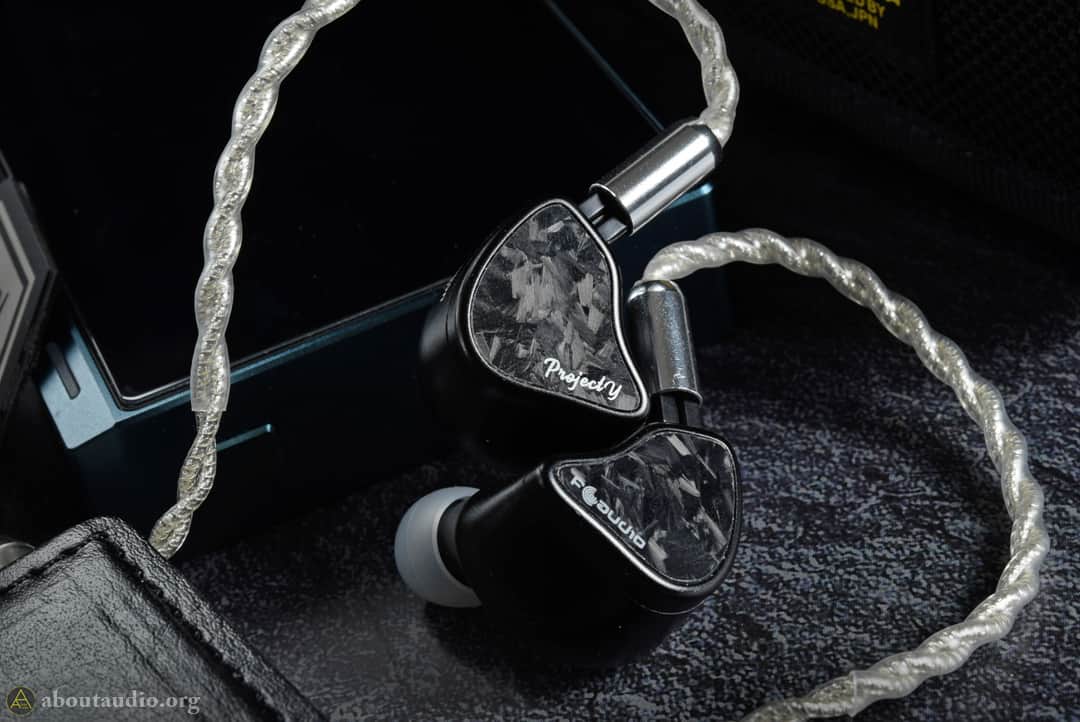 Sound impressions – Mids
Sound impressions – Mids
As we step into the mids, it doesn’t take long for us to realize that Project Y’s charisma starts to get emphasized. However, it differs from those that highlight upper-ends straight-forward and forcefully. Project Y instead presents the vocals in a way that is highly limber and smooth to the ears. The thickness of the vocal is neutral which tilts towards the feminine side, making it especially charming for female vocals but nevertheless nicely treats male vocals as well. Male vocals still retain good body and masculinity in their voice, so Project Y treats well for both of them. However, I would say female vocals seem to make a bit more use out of the timbre and the overall charms that Project Y is aiming for.
Speaking of charms, Project Y does have its own strong factor among the summit-fi IEMs – which are immense vitality and immersion brought upon the mids/highs. The drivers are well fused together to create a vivid yet unified sound, outclassing many others that are known to be engaging. Mids sound ultra-transparent with airy breezes going on, exposing the texture of the vocals vastly and boldly while maintaining a smooth surface. Yet interestingly enough, Project Y executes such vividness in a gentle, unexaggerated way. This is one good piece of evidence that FAudio did some seamless tuning works. The emphasis of the vocals is extremely consistent and even throughout the spectrum, so no spikes or sibilance. The upper ends gain a mild boost to add more shine as the sound approaches the treble.
 Sound impressions – Highs
Sound impressions – Highs
Needless to say, this is where the EST drivers kick in to do their jobs. FAudio did well with the trebles using T.C.T. technology, which is also used for their 3BA premium model, Chorus. Including the upper mids, the trebles seek a clever presentation where the instruments sound well-kept in their intended positions for accuracy, yet also feels highly spatial. The highs, superficially, approach with even more care than the mids, yet it actually poses an even stronger presence (if not equal).
Pure-toned, flashy trebles spread out wide over the top of the headroom that exposes fine grains and sparkles. It’s important for me to highlight that this doesn’t come along to feel untidy or disorganized – it’s the exact opposite, in fact. Despite the treble’s bold expression, they still stay within the boundaries of “keeping things calm” and layer such details in an organized matter. Alongside, the treble textures are crisp and analytical but don’t get dry or harsh. Both the upper mids and highs expose a mild, natural decay that reinforces Project Y’s realistic presentation.
Perhaps it would needless to say at this point, though the headroom size is stellar. Not so much towards the lower side, however. It focuses more on the width and the upper sides due to its inborn sound signature. d
 Comparisons – Rhapsodio Infinity II
Comparisons – Rhapsodio Infinity II
IF2 brings out more sub-bass quantity (but not drastically), making the amount equivalent or similar to slightly v-shaped IEMs while Project Y is only slightly elevated from flat. However, interestingly enough, the low-extension of these two is equally bold and clear.
They both dive deep and bring out a good ultra-low presence, yet several differences could still be found other than the quantity. The bass texture from Project Y feels as if it’s nicely waxed or polished to the surface, giving an oil-smooth feeling among the bass region. On the other hand, IF2 takes a more explicit approach with the bass while not getting harsh in texture, giving a more masculine growl to the lows.
Mids are fairly similar in presentation and performance but more openly and enthusiastic impression from IF2, whereas Project Y focuses more on reserving neatness and calmness. For the highs, IF2 shows speed and vigor to treble presentation. Sine that, trebles are more up-close and deliver a stronger blow. In the case of Project Y, highs are presented more virtuously and refined. It offers a gentle, soft sway of treble detail and sparkles. Apparently, both IEMs are equally matched in performance but quite clearly distinguished in their tuning – IF2 for masculinity and Project Y for femininity.
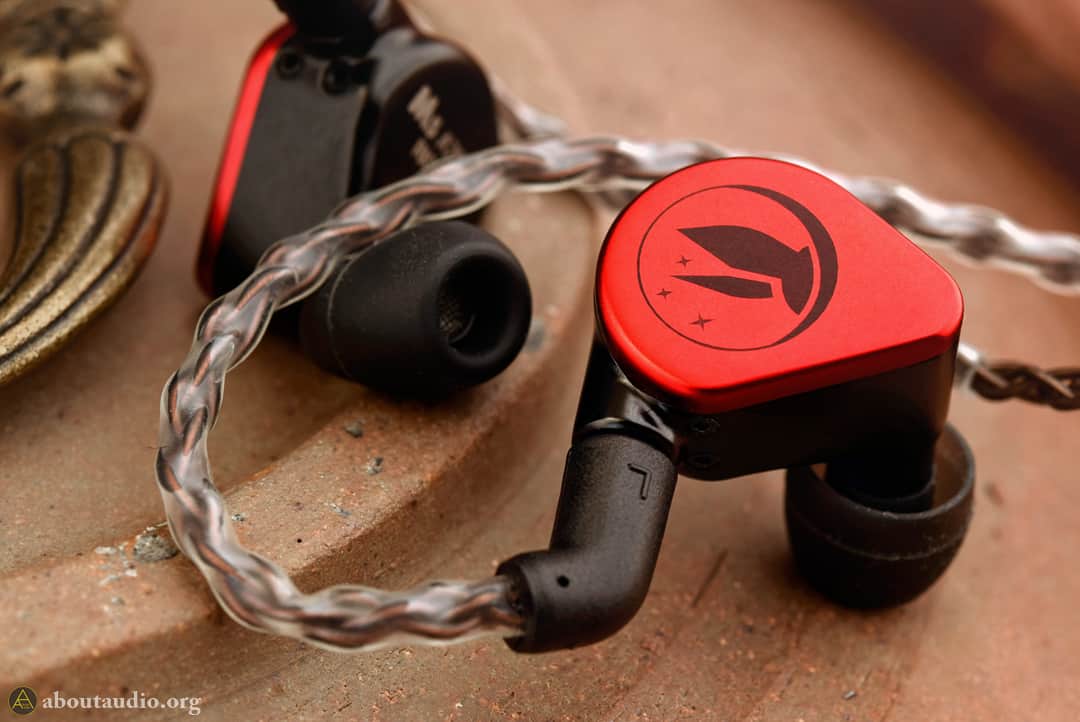 Comparisons – FIR Audio M5
Comparisons – FIR Audio M5
Our previously reviewed FIR Audio M5 is another great IEM that desires a very similar tuning direction as the FIR M5 does. The similarity between these two IEMs is not only limited to the overall sound signature but also the tone, texture, and even the style of the headroom formation. However, the Tactile Bass equipped on FIR M5 shows its superiority in the low-ends.
Within a minor difference, FIR M5 shows a deeper, meatier, and fuller bass reproduction along a bit more sub-bass. Though I would like to note that the low-ends on Project Y are purposely tuned to be rather flat and linear. In the case of Project Y, lows show nice extension and ultra-low presence. However, it is the quantity that is highly controlled to keep the low-end atmosphere as clean/neat as possible. So if your taste of bass lies very close to the reference target, Project Y is no worse selection at all, if not even better.
The Upper-mid transition on Project Y is just slightly smoother than FIR M5. Project Y snakes through the sibilance area seamlessly and smoothly, while FIR M5 leaves a mild crisp as the vocals transition towards the trebles. This does not escalate into a sibilance whatsoever, hence it is difficult to necessarily call either one to be better than the other. In fact, this upper-end crisp adds an adequate edge to the sound, serving the music to feel higher in analyticity.
Also, while both IEMs work out nicely with female and male vocals, FIR M5 tends to do slightly better with male vocals and Project Y for the female vocals. FIR M5 provides better pushing force for the mids, breathing in liveliness to the vocals. Project Y, on the other hand, handles the vocals more slowly and carefully, giving some extra feminine touch to the voicing. Keep in mind that all these “vocal matters” are rather insignificant in their differences and should not affect your decision too so much. Still worth mentioning, however. In conclusion, this comparison ends up in a complete draw. They are identical in their tiers along with their sound signature being extremely similar. However, all the small bit of differences are what that impact the final decision of the end-user.
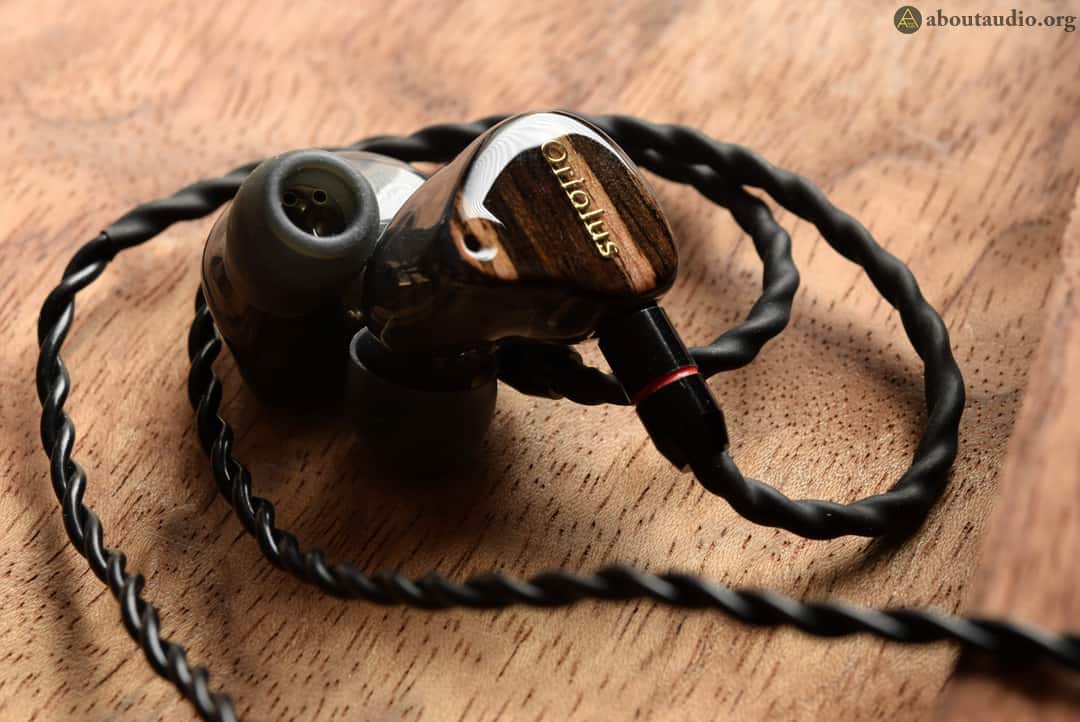 Comparisons – Oriolus Percivali
Comparisons – Oriolus Percivali
Despite the same tribrid driver setup, the comparison between these two is quite interesting. First off, Percivali desires strong openness and bluntness – but not as vibrant as Infinity 2. Project Y also desires openness but done more inwardly reserved. It’s also more wax-polished and moist in texture, as mentioned above. Another difference is that Percivali presents a white tone to its background. It’s a kind of open-field impression that is made with “emptiness”. In contrast, Project Y has a black background that also feels open-field quieter and calmer.
For the lower-ends, Percivali preserves more reverbs that make the bass meaty. Project Y’s bass is relatively linear and flat. Though instead, the bass is cleaner and neater. The size of the soundstage is a bit larger on Project Y. However, that is the case when speaking of width and fullness. Percivali brings out a wider altitude that gives superiority over Project Y when desiring upper-ends that reach far upper to the skies.
Also, note that the Percivali used for this comparison is the original version which is the basic model that is about $1k cheaper than its ultimate version, the Percivali JP version. The JP version comes with an exclusive PW Audio cable and the price tag becomes just about the same as Project Y. I only own the original version and while I only had few chances to audition the JP version, the differences in performance were quite clear and loud.
Project Y is also tuned based on its premium cable and a “basic” model doesn’t exist as it did with Percivali – so if considering the PW Audio cable kicking into the comparison, I wouldn’t be surprised if Percivali leveled out with Project Y in staging or even suppress Project Yin other areas. This comparison was also interesting as it is because the basic version of Percivali still managed to defend itself without the dedicated (and intended) cable.
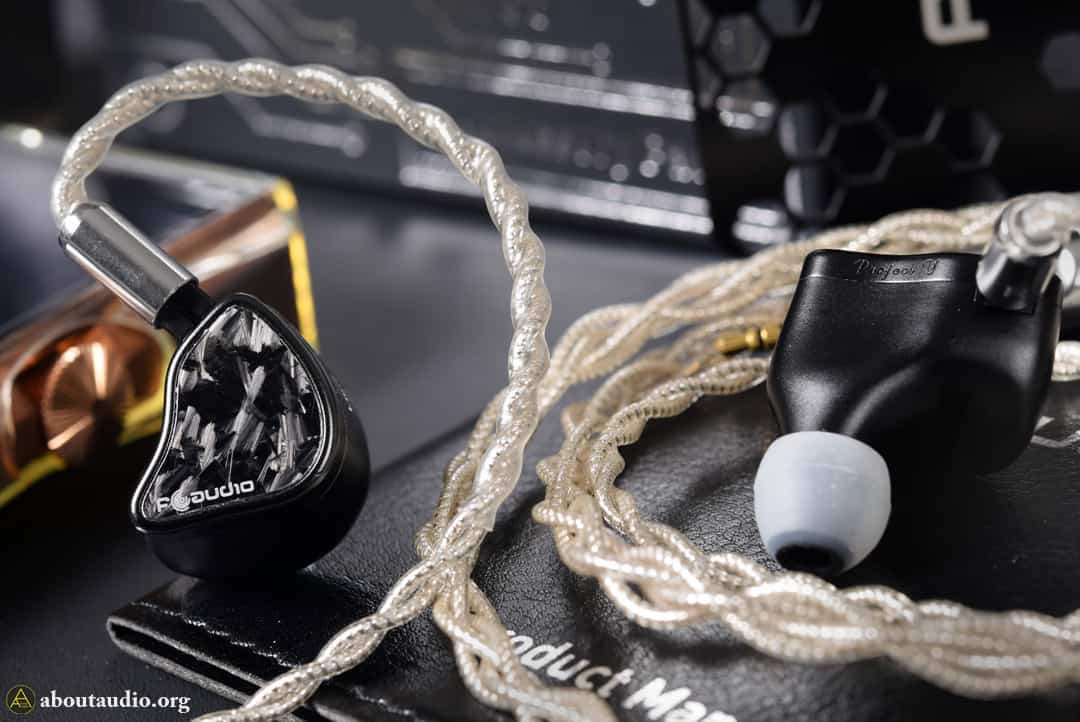 Verdicts
Verdicts
Overall, Project Y is an IEM that is made very much attractive. The sound reminds of a drop of water falling into a lake reflecting the clear sky, which is more than enough to mesmerize those who desire a natural and gentle sound signature. Faudio’s executed a reference tuning in such a rich and musical way, making a similar approach as 64 Audio Tia Fourte or FIR Audio M5 did. Another element that I appreciate from Project Y is that they’ve included a dedicated, custom-grade cable that rules out the necessity for upgrading the cable. Considering that many flagship IEMs come with a rather flimsy cable every now and then, Project Y’s complete experience (from cable all the way to the eartips) is much desirable. If a summit-fi IEM with well-extending, lush, and refined trebles is what you’re looking for, this earphone is going to be something that is more than special.


